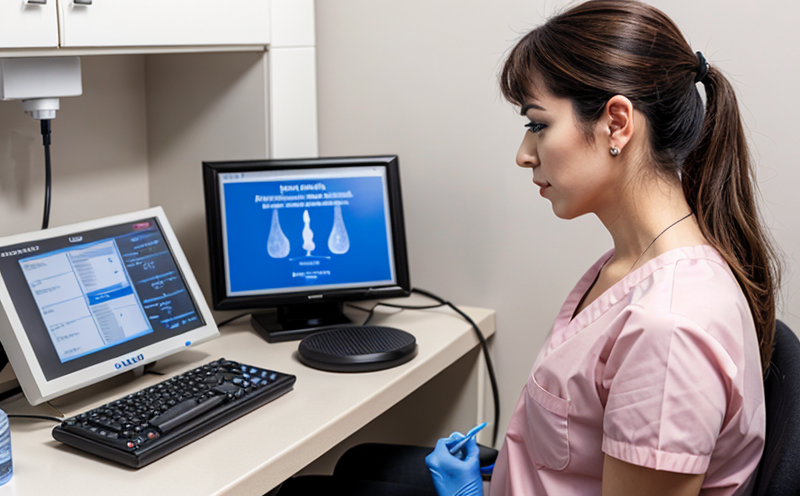Melatonin Testing in Poultry Circadian Rhythm Studies
The circadian rhythm of poultry plays a crucial role in their health, productivity, and welfare. Melatonin testing is an essential tool used to assess the circadian rhythms of poultry, which are directly linked to various physiological processes including sleep-wake cycles, feed efficiency, and overall health. This testing method helps researchers and agricultural scientists understand how melatonin levels fluctuate throughout the day and across different environmental conditions.
Melatonin is a hormone produced primarily by the pineal gland in response to darkness. In poultry, it is released at dusk, promoting sleep and reducing feed intake during rest periods. Understanding these fluctuations through precise melatonin testing can lead to better management practices that optimize productivity while enhancing animal welfare. This service involves collecting blood samples from poultry under controlled conditions, analyzing them using advanced chromatography techniques, and providing detailed reports on melatonin levels.
The process begins with the collection of blood samples from live birds or postmortem tissue. Specimen preparation includes centrifugation to separate plasma which contains high concentrations of melatonin for accurate measurement. Chromatography instruments like HPLC (High-Performance Liquid Chromatography) are used due to their precision and ability to detect even minute amounts of the hormone.
Once collected, samples undergo rigorous quality assurance procedures ensuring accuracy and reliability of results. Our laboratory adheres strictly to international standards such as ISO/IEC 17025 for proficiency in analytical methods. Reporting follows strict protocols providing comprehensive data on melatonin levels alongside recommendations based on industry best practices.
This service is particularly beneficial for researchers working in fields related to animal behavior, nutrition, and health within the agricultural sector. By accurately measuring melatonin levels, scientists can identify optimal times for feeding, lighting schedules, and breeding programs that align with natural circadian rhythms enhancing flock performance. This not only improves productivity but also contributes positively towards sustainable farming practices.
For poultry farmers interested in improving their operations through scientific insights into avian biology, this service offers valuable information about managing light exposure and diet timing to maximize production efficiency while maintaining ethical standards regarding animal care.
Benefits
- Enhances Productivity: By aligning feeding schedules with natural circadian rhythms, farmers can expect improved feed conversion ratios and higher egg or meat yields.
- Improves Animal Welfare: Understanding melatonin levels helps in creating environments that promote better sleep patterns and overall health for the birds.
- Promotes Sustainable Practices: Optimizing light exposure based on melatonin data can reduce energy consumption without compromising output.
- Scientific Insights: Researchers gain valuable insights into how environmental factors influence melatonin secretion, leading to advancements in poultry science.
The ability to accurately measure melatonin levels provides a deeper understanding of its role in circadian regulation. This knowledge allows for more informed decisions regarding management practices which ultimately benefit both the industry and consumers alike by producing healthier products with enhanced nutritional value.
International Acceptance and Recognition
Melatonin testing in poultry circadian rhythm studies is widely accepted across several countries and regions. Standards set forth by organizations such as the International Organization for Standardization (ISO) ensure that laboratories adhering to these guidelines maintain high levels of accuracy and reliability.
- ISO/IEC 17025: Compliance with this standard guarantees proficiency in analytical methods, ensuring consistent results across different labs worldwide.
- ASTM Standards: These standards provide a framework for accurate measurement techniques used specifically within the agricultural sector. They ensure that laboratories use validated protocols when analyzing melatonin levels.
The recognition of our testing services extends beyond national borders, being acknowledged by leading institutions globally who rely on these results to make informed decisions about their research projects and commercial ventures involving poultry production.
Competitive Advantage and Market Impact
The ability to offer precise melatonin testing services in poultry circadian rhythm studies provides a distinct competitive edge for laboratories aiming to serve this niche market. Our comprehensive approach ensures that clients receive not only accurate test results but also actionable insights into how these findings can be applied within their operations.
- Cost Efficiency: By optimizing light exposure and feeding times, farmers reduce operational costs while increasing profitability through improved productivity.
- Innovation Leadership: Being at the forefront of melatonin research allows us to stay ahead of industry trends, offering innovative solutions that drive market growth and adoption.
- Sustainability Focus: Our services align with global efforts towards sustainable agriculture, contributing positively to environmental conservation initiatives through efficient resource utilization.
The demand for scientifically backed poultry production practices is growing steadily. By leveraging our expertise in melatonin testing, we help clients meet these demands while establishing themselves as leaders in their respective markets.





